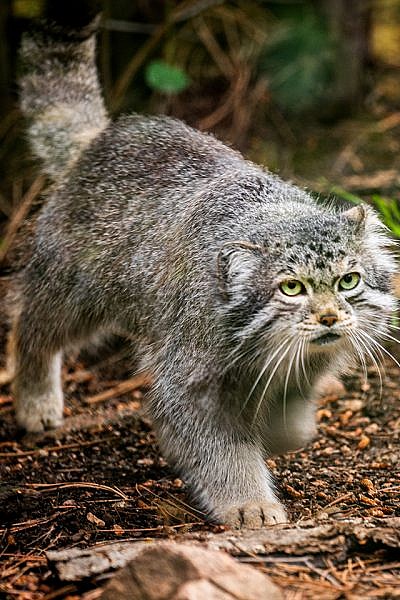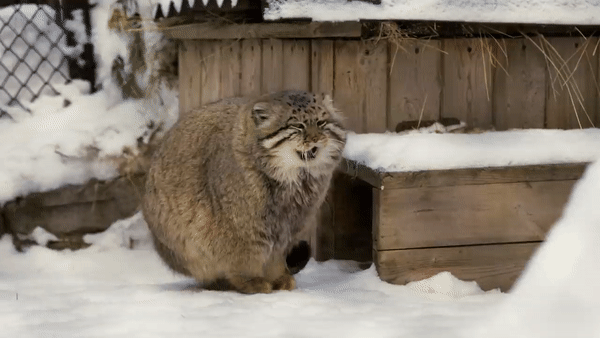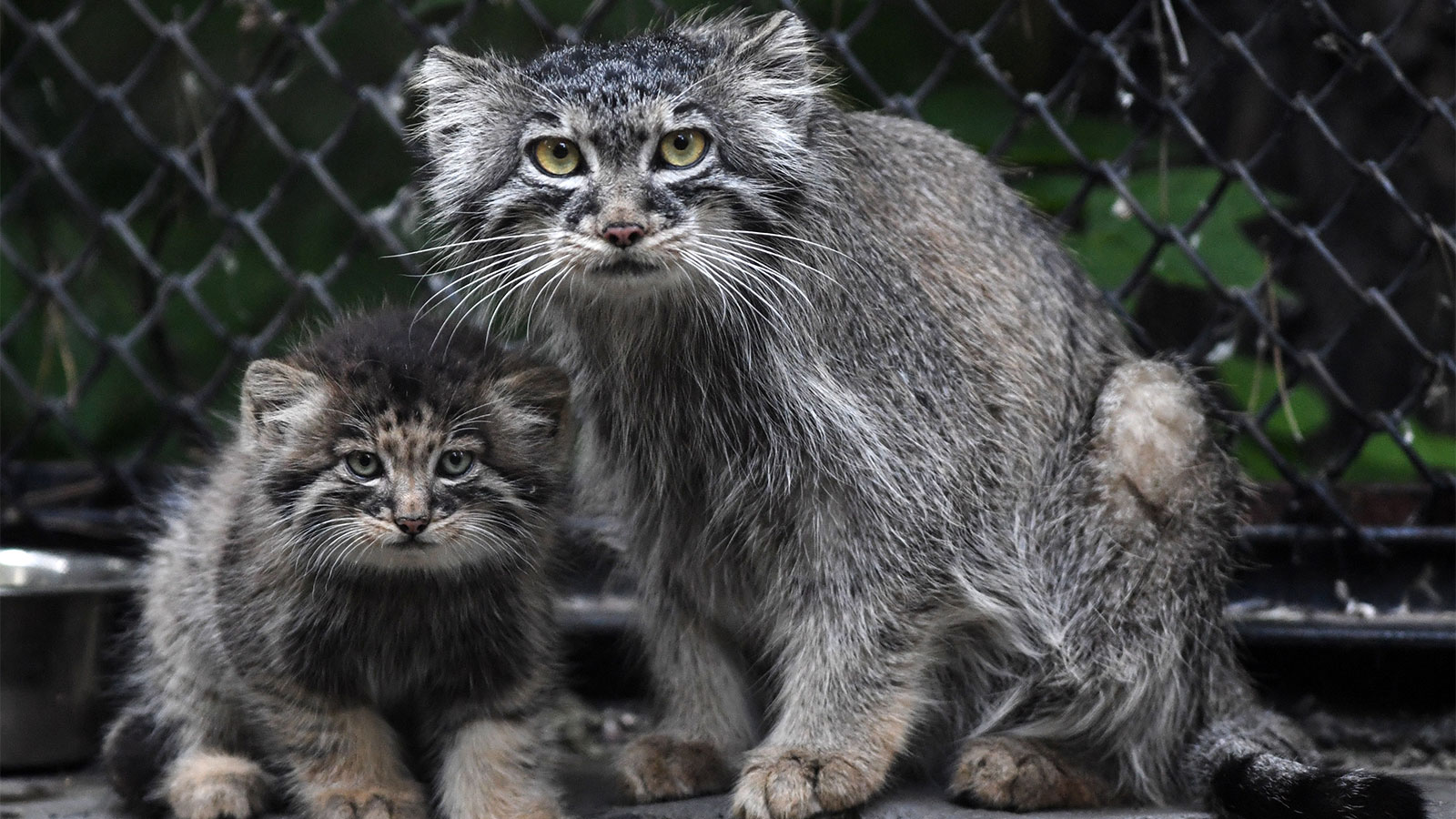Pallas's Cat
Species: O. manul
Phylum: Chordata
Class: Mammalia
Kingdom: Animalia
Order: Carnivora
-
The Pallas' cat also goes by the name manul. German naturalist Peter Pallas originally classified the cat as Felis manul in 1776. The word 'manul' has its roots in the Mongolian language. Its current scientific name, Otocolobus, comes from the Greek language and can be translated to 'ugly-eared.' When Pallas first described the cat, he erroneously suggested it was the ancestor of the domestic Persian breed because of its long fur, stout build, and flattened face.
-
All that fluff creates the illusion of size. Pallas' cats appear to be bigger and heavier than they actually are due to their stocky builds and long, dense coats. In reality, they're about the size of domestic cats: they measure up to 26 inches in body length (with an 8-12 inch tail) and weigh only around 10 pounds.
-
They have unusual pupils. Unlike other cats, the pupils of Pallas' cats contract into small circles rather than vertical slits.
-
Pallas' cats are particular about their habitat. They live throughout central Asia, from western Iran to western China. Within this range, Pallas' cats prefer the cold and arid environments of rocky steppes and grasslands at elevations up to about 15,000 feet.
-
Pallas' cats have the longest and densest fur of any cat. Their fur is nearly twice as long on their belly and tail as on their top and sides. Presumably, this helps keep the cats warm as they hunt on snow or frozen ground. The length and density of their fur also changes seasonally, growing longer and heavier in the winter.





